PENGUIN WRITERS GUIDES
Improve Your Spelling
George Davidson is a former senior editor with Chambers Harrap. In addition to writing dictionaries and thesauruses, he is the author of several books on English grammar, usage, spelling and vocabulary. He lives in Edinburgh.
The Penguin Writers Guides
How to Punctuate George Davidson
How to Write Better English Robert Allen
How to Write Effective Emails R. L. Trask
Improve Your Spelling George Davidson
Writing for Business Chris Shevlin
PENGUIN WRITERS GUIDES
Improve Your Spelling
GEORGE DAVIDSON

PENGUIN BOOKS
PENGUIN BOOKS
Published by the Penguin Group
Penguin Books Ltd, 80 Strand, London WC2R 0RL , England
Penguin Group (USA) Inc., 375 Hudson Street, New York, New York 10014, USA
Penguin Group (Canada), 10 Alcorn Avenue, Toronto, Ontario, Canada M4V 3B2
(a division of Pearson Penguin Canada Inc.)
Penguin Ireland, 25 St Stephens Green, Dublin 2, Ireland
(a division of Penguin Books Ltd)
Penguin Group (Australia), 250 Camberwell Road,
Camberwell, Victoria 3124, Australia (a division of Pearson Australia Group Pty Ltd)
Penguin Books India Pvt Ltd, 11 Community Centre,
Panchsheel Park, New Delhi 110 017, India
Penguin Group (NZ), cnr Airborne and Rosedale Roads, Albany,
Auckland 1310, New Zealand (a division of Pearson New Zealand Ltd)
Penguin Books (South Africa) (Pty) Ltd, 24 Sturdee Avenue,
Rosebank 2196, South Africa
Penguin Books Ltd, Registered Offices: 80 Strand, London WC2R 0RL , England
www.penguin.com
First published 2005
Copyright George Davidson, 2005
All rights reserved
The moral right of the author has been asserted
Except in the United States of America, this book is sold subject to the condition that it shall not, by way of trade or otherwise, be lent, re-sold, hired out, or otherwise circulated without the publishers prior consent in any form of binding or cover other than that in which it is published and without a similar condition including this condition being imposed on the subsequent purchaser
ISBN: 978-0-14-194133-2
Contents
Preface
... my spelling is Wobbly. Its good spelling but it Wobbles, and the letters get in the wrong places.
A A Milne, Winnie-the-Pooh
If you are looking at this book, it is perhaps because, like Pooh, you know your spelling is a little wobbly. It may be good spelling good enough at least for your own personal use but you know that it is not really adequate in contexts where a more conventional approach to spelling is expected. Essays, reports, exam papers, formal letters, office memos, minutes of meetings all these require accurate, correct spelling, and you know that yours wobbles.
English spelling is, unfortunately, full of traps and snares, such as silent letters, double letters and different spellings for the same sound. This book will guide you through them all. It covers the basic broad rules of English spelling (our spelling is not quite as unsystematic and unpredictable as it is sometimes said to be, and the main rules are not difficult to grasp) as well as looking in more detail at the areas of spelling that cause most problems for poor spellers. In addition, some useful techniques are suggested for both checking and improving your spelling.
For many people, however, it is not only the letters used to spell words that cause problems but also the other marks that are so important in spelling the hyphens, the apostrophes and the accents. These too are fully explained.
When you have worked your way through this book, you will find that your spelling will no longer be wobbly: you will be able to spell with accuracy and confidence.
You may, of course, not want to work through this book systematically from beginning to end. You dont need to. Improve Your Spelling is designed to be equally useful for systematic study, for casual browsing and for quick checking of particular points you are uncertain about. By consulting the indexes at the back of the book, you can quickly and easily home in on any point you want to check.
This book assumes no prior knowledge in the reader (apart from a basic knowledge of English). It is therefore suitable for native speakers and learners alike. Technical terms have been kept to a minimum, but they have not been avoided altogether, as they are often useful labels that assist explanations. Technical terms that are likely to be unfamiliar to the general reader are explained at the point where they are first introduced, and all technical terms are fully explained in an appendix at the end of the book.
The variety of English described in this book is British English. American English differs from British English in many respects (in spelling and punctuation as well as in vocabulary and grammar), and the main spelling differences between these two major forms of English are described in .
Symbols used in this book
 indicates an incorrect spelling.
indicates an incorrect spelling.
 draws attention to a correct spelling.
draws attention to a correct spelling.
 indicates a memory aid or mnemonic.
indicates a memory aid or mnemonic.
!! indicates a spelling requiring particular care.
Forward slashes // enclose speech sounds. For example, the sound /ay/ as in pay, tail or major, or the sound /k/ as in cat,keep,chasm or queen.
Speech sounds
The speech sounds of English are indicated as shown below.
Vowel sounds
Different accents of English have different numbers of vowel sounds and differ in the use or distribution of the vowel sounds that they have. The following is a fairly standard list of the English vowel sounds, but it may include vowel distinctions that are not made in your accent and omit vowel distinctions that feature in your accent. The presence or absence of such vowel sounds in the list below, and in the book as a whole, does not affect the explanations of the spelling rules.
/a/ as in at,cash,blank, etc | /ah/ as in car,palm,aunt, etc |
/air/ as in air, care, bear, etc | /aw/ as in saw,daughter,bought, etc |
/ay/ as in pay, tail,major, etc | /e/ as in bed,said,breath, etc |
/ee/ as in f |



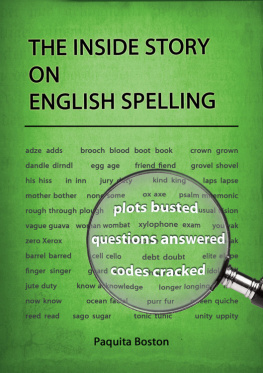
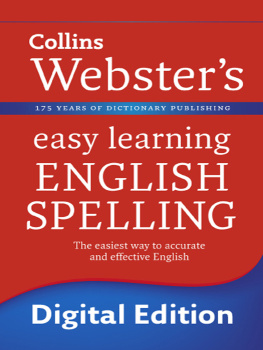

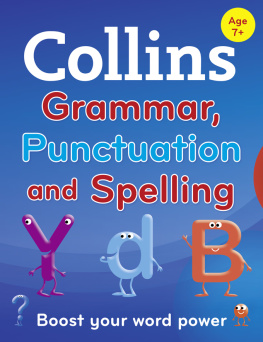
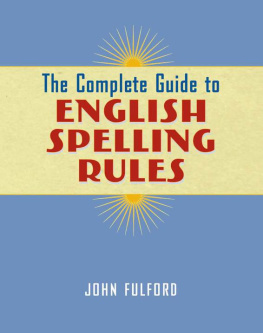
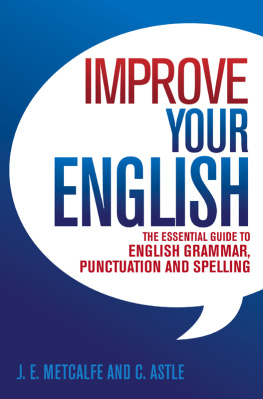
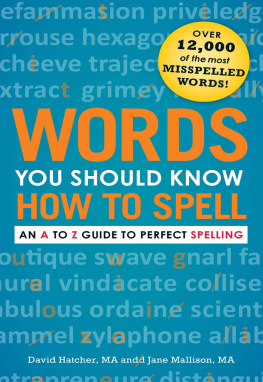

 indicates an incorrect spelling.
indicates an incorrect spelling. draws attention to a correct spelling.
draws attention to a correct spelling. indicates a memory aid or mnemonic.
indicates a memory aid or mnemonic.